MileValue is part of an affiliate sales network and receives compensation for sending traffic to partner sites, such as CreditCards.com. This compensation may impact how and where links appear on this site. This site does not include all financial companies or all available financial offers. Terms apply to American Express benefits and offers. Enrollment may be required for select American Express benefits and offers. Visit americanexpress.com to learn more.
Note: Some of the offers mentioned below may have changed or are no longer be available. You can view current offers here. All values of Membership Rewards are assigned based on the assumption, experience and opinions of the MileValue team and represent an estimate and not an actual value of points. Estimated value is not a fixed value and may not be the typical value enjoyed by card members.
I originally wrote this series in 2012. As it has turned out to be quite popular, I am in the process of updating it to reflect current information for 2016.
“Top 10 Things to Do, See, and Eat in Peru” Series Index
- Top 10 Things to Do, See, and Eat in Peru: Prologue
- Top 10 Things to Do, See, and Eat in Peru: #1, Machu Picchu
- Top 10 Things to Do, See, and Eat in Peru: #2 & 3, Sacred Valley and Amazon Rainforest (this post)
- Top 10 Things to Do, See, and Eat in Peru: #4 & 5 Lake Titicaca and the Colca Canyon
- Top 10 Things to Do, See, and Eat in Peru: #6 & 7, Cuzco and Lima
- Top 10 Things to Do, See, and Eat in Peru: #8, 9, and 10; Iquitos, Mancora, Arequipa & Some Honorable Mentions
2. Swim with the Pink Dolphins in the Amazon Rainforest
Sixty percent of Peru is Amazon Rainforest. Peru’s natural beauty rivals its historical and cultural beauty. The most accessible jumping off points for visits to the rainforest are Puerto Maldonado in the southeast and Iquitos in the northeast.
I think Iquitos is a more interesting city, but otherwise the options are pretty equal. In both cases, you’ll have the chance to take a boat down the river to the eco-lodge of your choice in all budget ranges. Choose one in your budget range with a good first-hand review or internet reviews.
Daily hikes will reveal a wealth of interesting plant and animal life. Nightly hikes or boat rides will spot the nocturnal animals like caimans. There aren’t a lot of amazing animal ecosystems left, so a chance to see a rainforest full of monkeys, butterflies, frogs, and lizards shouldn’t be missed.
But by far the coolest animal in the Peruvian rainforest is the pink dolphin–yes, they’re really pink.
Spotting or swimming with these guys is the highlight of the Amazon. The other highlight is the lack of cell phone service. Bring some good books, and because electricity is scarce even at the lodges, a charged e-reader might be advisable.
The main lowlights in the jungle are the intense humidity and mosquitos. Bring your DEET-packed bug spray and mentally prepare yourself to be wet the entire time.
If you’re extremely adventurous, you can take boat cruises down the Amazon of varying length. You can even cross into Brazil or Bolivia via boat. I haven’t done any of the boat cruises, but I’d be interested if anyone has any experience.
Hotels: eco-lodges or tents depending on your price range.
Time needed to visit: 2-5 days.
How to Get There
4,500 Avios from Cuzco to Puerto Maldonado or Lima to Iquitos each way and a few dollars in tax (flying LATAM).
Best Time to Visit
The high tourist season for the Peruvian Amazon is the Southern Hemisphere’s winter, June to September. There are less mosquitoes and animals tend to hang out around the rivers more, making sitings a bit easier. But as always, tourist high season = higher prices. A pro to going during the wetter, more mosquito ridden time aside from cheaper services/accommodation: water levels are higher in the summer, making exploration of the river more accessible.
3. See the Less Famous Inca Ruins in the Sacred Valley
The Sacred Valley is the area around Cuzco dotted with Inca ruins, tiny towns, and Quechua speakers. Most people see some of the sites as part of a package tour that includes Cuzco and Machu Picchu. The area is amazing, and should not be rushed through. It rewards the independent traveler.
I think the must-sees are Ollantaytambo, Q’allaqasa and Intihuatana at Pisac, and Chinchero Market. (Pro tip for any Spanish speakers: Quechua speakers pronounce “ll” like “li,” so Quechua place names are pronounced this way. That’s why the nickname for Ollantaytambo and the first name of Peru’s president are pronounced “Olianta.”
Ollantaytambo is a small town with cobblestone streets and stone houses. The city has been continuously inhabited for 900 years, so you can see for yourself the urban planning of the Incas. The town itself deserves a long walk in the evening. (Maybe the night before taking the train to Aguas Calientes, the town at the base of Machu Picchu. More about taking the train from here to Machu Picchu at #1).
But the star of Ollantaytambo is the terraced fortress smiling down on the town. These are some of the best Inca ruins in Peru and show how the Inca farmed and how they protected their cities. You can also see the stone storehouses on the mountain that the Incas used to preserve their crops. How the Incas figured out that the location and design of the storehouses preserved their crops longer is beyond me!
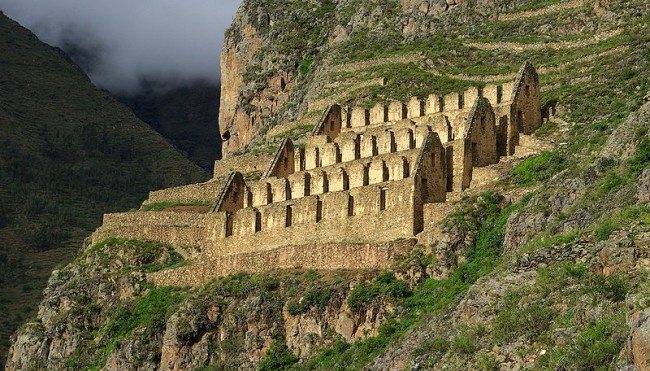 Q’allasqa is one of my favorite Inca ruins, a well-preserved citadel on top of a mountain. Intihuatana is the nearby Temple of the Sun, the Inca god. What’s so great about these ruins is that they almost rival Machu Picchu and Ollantaytambo in impressiveness, and they are completely deserted. Pisac’s big market days are Tuesday, Thursday, and Sunday, so if you come on other days, these ruins are all yours.
Q’allasqa is one of my favorite Inca ruins, a well-preserved citadel on top of a mountain. Intihuatana is the nearby Temple of the Sun, the Inca god. What’s so great about these ruins is that they almost rival Machu Picchu and Ollantaytambo in impressiveness, and they are completely deserted. Pisac’s big market days are Tuesday, Thursday, and Sunday, so if you come on other days, these ruins are all yours.
Finally, while Pisac’s market is bigger, I prefer Chinchero’s market. Chichero’s Sunday and smaller Tuesday/Thursday markets have all the tourist tchotchkes you can buy throughout Peru: Inca chess sets, llama figurines made with real llama fur, “alpaca” scarves (that are mostly llama fur.)
But what makes Chinchero’s market better than most markets is that it is attached to a real locals’ market. Locals come from surrounding villages to sell their crops, animals, and other products. You can watch how real markets have worked in Peru for centuries.
Here’s some bargaining advice gleaned from economic theory worthy of Gary Leff. Just be ruthless and get the lowest price you can, which is probably under half of the original asking price and may be as low as one fifth depending on the item. Aren’t you being selfish as a rich foreigner by doing this to a poor Peruvian?
No. Economic theory would suggest that if people overpay the vendors, vendors’ expected earnings will increase, causing more people to choose selling at the market on the margin. More vendors will rush in driving expected earnings back down to where the marginal vendor is indifferent between selling at the market and his old job again. So overpaying doesn’t enrich the vendors long term; it just creates more of them.
There’s plenty to do in the Sacred Valley, so don’t skip over it on the way to Machu Picchu, and see it independently if you feel comfortable traveling that way. It will be more rewarding than a packaged tour, which will rush through these site and will ensure you are always at a place packed with tourists.
Hotels: Base yourself in Cuzco, and do day trips. The exception is Ollantaytambo where I recommend an overnight en route to Machu Picchu. More in the Machu Picchu section.
Time needed to visit: 3+ days
How to Get There
You can take private cars, tour bus, or public bus from Cuzco or between these towns. To learn how to get to Lima, read the Prologue of this series. To learn how to get to from Lima to Cuzco, read the Machu Picchu section of this series.
Sarah Page’s Two Cents: The Sacred Valley
I did not travel to the Amazon when I visited Peru. I did spend time in the Sacred Valley though, and found the towns dotting it to be culturally rich and charming. While I loved the historic architecture and significance of Cuzco, it’s full of tourists. The Sacred Valley still maintains that untouched charm that off the beaten path travelers strive for. Below are some of my recommendations that I particularly enjoyed in the Sacred Valley.
Pisac
I recommend hiking to Intihuatana from the trail that begins in the town and winds up through the Incan terraces. There are beautiful views along the way you won’t see if you take a bus to the top, and overall the hike isn’t that long (from my memory it took a couple hours, but I stopped for a lot of pictures).

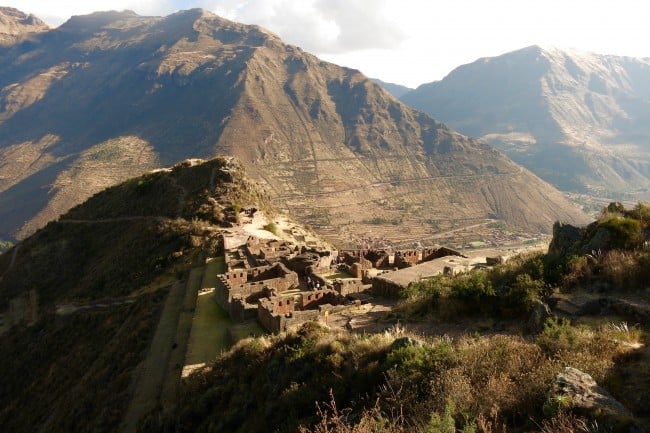
Walking down from Intihuatana on the other side of the mountain is more terracing.
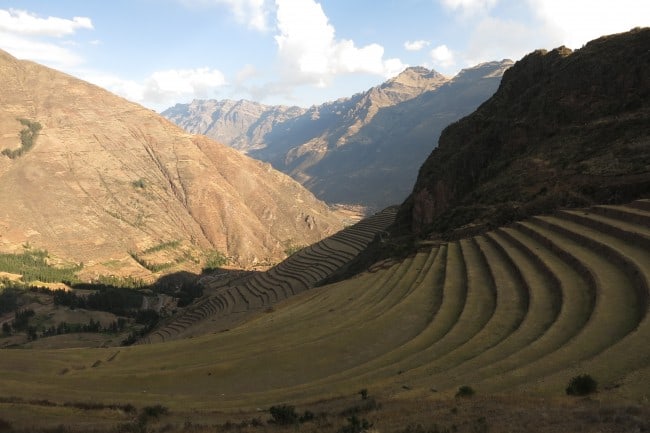
Wind down through that for about 10 minute and you’ll get to a parking lot where you can either take a bus or a taxi back to the town of Pisac.
Ollantaytambo
Another Incan ruin I enjoyed that Scott didn’t mention is Puma Marca. There is a trail you can take from the town of Ollantaytambo all the way to the ruins. Overall the hike takes anywhere from four to six hours roundtrip on foot. It winds through terraces along the side of a mountain, looking down on farms, rivers, and eucalyptus tree forests nestled in a valley. I was completely alone the entire time, except for a few local farmers and cows I passed by.
The Incan ruins are beautiful as well, and not so commonly visited. I had them all to myself even though I was there during the peak tourist season.

The hike to Pumamarca isn’t exactly the most well marked, but you can google the directions to follow. Just pack lots of water and snacks and a sense of adventure and you will be greatly rewarded. It’s one of my fondest memories in Peru, and traveling, perhaps ever.
Food in the Sacred Valley
I ate at a lovely little place called Mullu Cafe in the square of Pisac that head a massive menu full of interesting, healthy options. It’s always refreshing to find tasty, healthy food when traveling as it’s not the easiest to come by. The owner’s name is Josip, so be sure to say hello if you stop in. You can tell him Sarah from Buenos Aires sent you!
And while we’re on the subject of food: if you drive by a place near Lamay (in the Sacred Valley) with a large statue of a guinea pig, STOP.
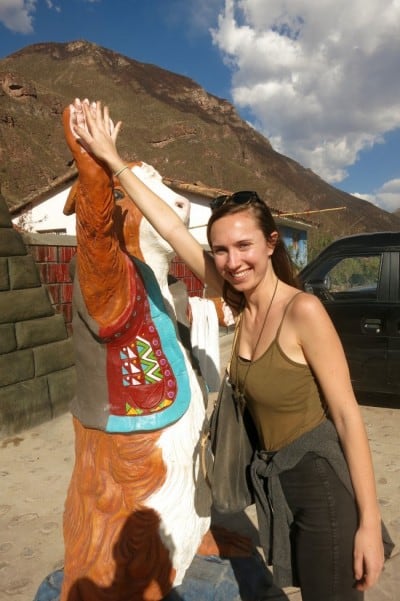
They serve a delicious “cuy”, aka guinea pig, which is a traditional dish in this region of Peru. The woman in this picture had spent hours roasting the cuy rotisserie-style, by HAND. The Peruvians take pride in their cuy.
In Ollantaytambo, two meals stick out in my memory. One was the Aji de Gallina at a place called Coffee Tree. Aji de Gallina is one of my favorite traditional Peruvian dishes made with shredded chicken stewed in a spicy, creamy sauce served on top of rice. La Esquina was great for hearty, creative salads (again, a hard thing to come by traveling!) and serves the local craft beer Sacred Valley Brewing Company.
Bottom Line
You can see exotic flora and fauna in the Amazon in one of the few truly diverse animal ecosystems left on this planet. You can see ancient Incan ruins set in charming towns throughout the Sacred Valley, with great hiking and food to boot. Don’t miss out on either of these destinations as they lay at the heart of Peruvian culture.


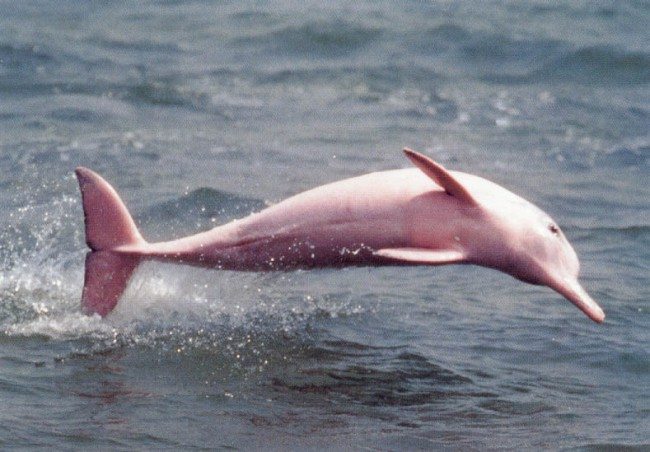


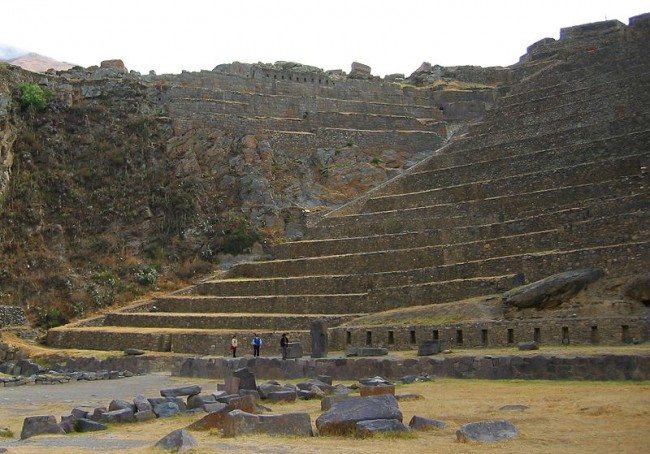
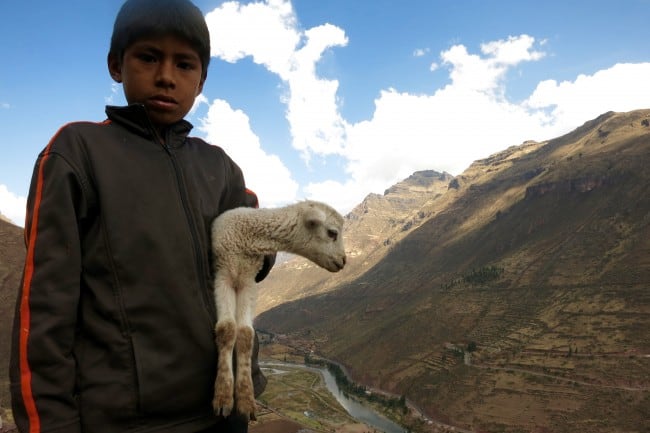
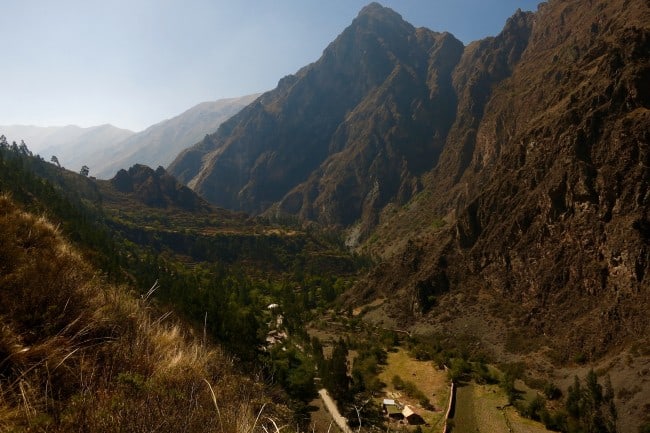
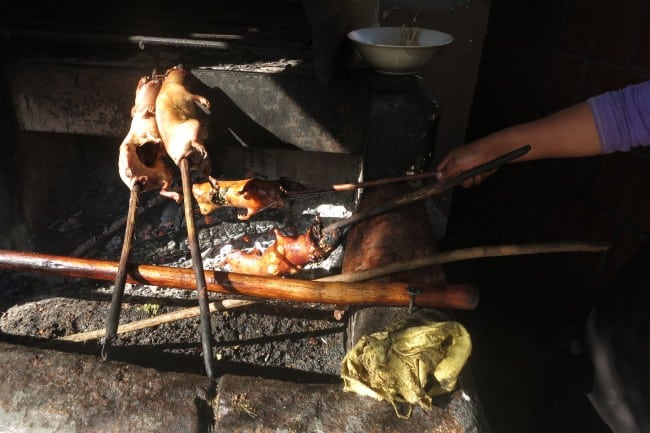
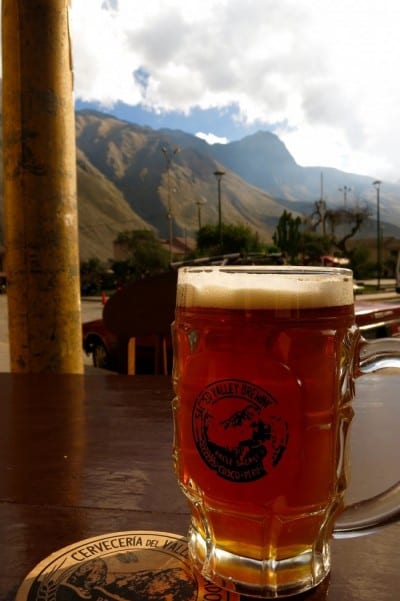
Great tips! I didn’t see this before booking hotels/flights, but I arrive on Nov. 16th (friday) mid afternoon and leave Nov. 18th (Sunday). Would you suggest trying to immediately getting out to the villages in the Sacred Valley on the 16th post arrival? After Machu Pichu on the 17th? Also leave 5 pm on the 18th so perhaps leave Cusco early and make it back by early afternoon?
[…] Top Ten: 3 and 2 […]
[…] Top 10 Things to Do, See, and Eat in Peru: #2 & 3, Sacred Valley and Amazon Rainforest […]
[…] Top 10 Things to Do, See, and Eat in Peru: #2 & 3, Sacred Valley and Amazon Rainforest […]
great update to your previous posts. I appreciate the tips on where to stop for a bite to eat and a drink. I’d like to try some of those Peruvian craft brews!!
Are you familiar with Chuncho Macaw Clay Lick in Tambopata National Reserve? I haven’t been to Peru, but that’s at the top of my list, along with Machu Picchu. (I’ll probably do the trip as part of an organized tour in the near future.)
[…] Top 10 Things to Do, See, and Eat in Peru: #2 & 3, Amazon Rainforest and the Sacred Valley […]
[…] Top 10 Things to Do, See, and Eat in Peru: #2 & 3, Sacred Valley and Amazon Rainforest […]
[…] is one of several Peruvian gateways to an Amazon Rainforest excursion (#2 on this list), but it has a number of interesting things to do in its own right. Check out the Belen market, […]